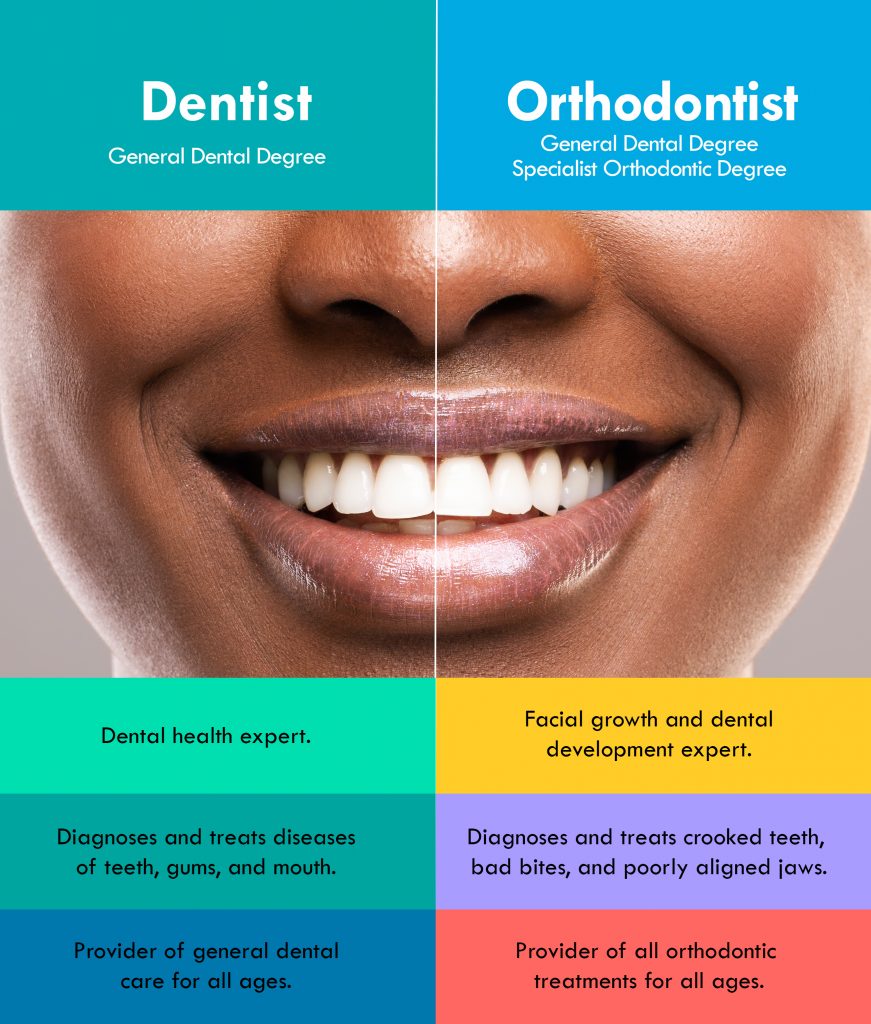The 7-Second Trick For Legacy Orthodontics
The 7-Second Trick For Legacy Orthodontics
Blog Article
The 9-Second Trick For Legacy Orthodontics
Table of Contents3 Easy Facts About Legacy Orthodontics ShownLegacy Orthodontics Fundamentals ExplainedThe smart Trick of Legacy Orthodontics That Nobody is Talking AboutSome Of Legacy Orthodontics10 Easy Facts About Legacy Orthodontics Shown
In enhancement, we use adjustable therapy schedules, adaptable payment choices and a fun, pleasurable experience.An orthodontist is a dental practitioner educated to diagnose, protect against, and deal with teeth and jaw abnormalities. Orthodontists function with individuals of all ages, from children to adults.
Malocclusion, or misaligned teeth, can cause oral problems, including dental cavity, gum tissue condition, and hard or excruciating eating. Not everyone is born with straight teeth. If you have a poor bite or large areas between your teeth, you might intend to speak with a dental professional concentrating on orthodontic care.
Legacy Orthodontics Fundamentals Explained
( Photo Credit Score: DigitalVision/Getty Images) Orthodontists utilize dealt with and removable oral gadgets, like braces, retainers, and bands, to change the position of teeth in your mouth. Orthodontic therapy is for dental irregularities, including: Misaligned teethBite problems, like an overbite or an underbiteCrowded teeth or teeth that are too much apartJaw misalignmentThe goal of orthodontic therapy is to enhance your bite.
A healthy bite ensures you can consume, chew, and talk appropriately. While you might think about orthodontists as primarily for youngsters or teenagers who need dental braces, they can fix oral troubles at any type of age. Orthodontists go to university, oral college, and orthodontic school. After graduation, they invest 2 or 3 years in an orthodontic residency program.
All orthodontists are dental experts, yet not all dental practitioners are orthodontists. Orthodontic residency programs supply intensive, focused instruction for oral experts. They concentrate on two areas: Exactly how to correctly and securely move teeth Just how to properly direct advancement in the teeth, jaw, and faceOnce an orthodontist has completed training, they have the option to come to be board licensed.
Legacy Orthodontics Fundamentals Explained
Imbalance, or malocclusion, is the most typical reason individuals see an orthodontist. It is hereditary and is the outcome of dimension differences between the top and lower jaw or between the jaw and teeth. Malocclusion brings about tooth overcrowding, a misshapen jaw, or irregular bite patterns. Malocclusion is typically treated with: Your orthodontist attaches metal, ceramic, or plastic square bonds to your teeth.
Some individuals require a headwear to assist relocate teeth right into line with pressure from outside the mouth. A retainer is a custom-made device that keeps your teeth in place.
They're most typically made use of on kids. They can develop added space in the mouth without needing to draw teeth. If you have a major underbite or overbite, you could require orthognathic surgery (likewise called orthodontic surgical treatment) to extend or shorten your jaw. Orthodontists make use of cables, medical screws, or plates to sustain your jaw bone.
You may require to see an orthodontist if you have: Crowding or otherwise adequate area for every one of your teethOverbite, when your top teeth come by your bottom teethUnderbite, when your bottom teeth are as well much forwardSpacing or issues with gapsCrossbite, which is when your upper teeth fit behind your bottom teeth when your mouth is closedOpen bite or an upright void in between your front base and top teethMisplaced midline, when the facility of your bottom and upper teeth don't line up Dealing with a dental malocclusion can: Make attacking, eating, and speaking easierImprove the balance of our face and your general appearanceEase discomfort from temporomandibular joint problemsDifferent your teeth and make them easier to clean up, helping stop tooth degeneration or dental caries It's frequently a dental professional who first notices misaligned teeth throughout a regular examination.
Our Legacy Orthodontics Diaries

During your first orthodontic appointment, you'll likely have: A dental examPhotos taken of your face and smileDental X-raysPanoramic (360 level) this page X-rays of your face and headImpressions to produce molds of your teethThese tests will aid your orthodontist know how to wage your therapy. braces. An orthodontist is a dental professional who's had training to treat your teeth and jaw
An orthodontist is focused on your bite, so something like a chipped tooth would certainly be handled by a dental expert. Orthodontists are concentrated on your bite, or the means your teeth fit together, and the straightness of your teeth.
Ever wondered exactly how stars constantly seem to have flawlessly straightened teeth? Orthodontists are dental specialists that focus on remedying irregularities in the teeth and jaws.
The 3-Minute Rule for Legacy Orthodontics

, orthodontists have a diverse toolkit at their disposal. These tried-and-true braces make use of a system of braces bonded to the teeth and connected by wires.
Clear aligners, like Invisalign, are a prominent choice for clients seeking an extra very discreet therapy alternative. These detachable trays are customized to progressively shift the teeth's placement. Headwear may be utilized together with dental braces or aligners to use additional targeted forces, especially for fixing jaw discrepancies. In instances of narrow jaws, palatal expanders can be utilized to produce area for correct tooth placement.
Report this page